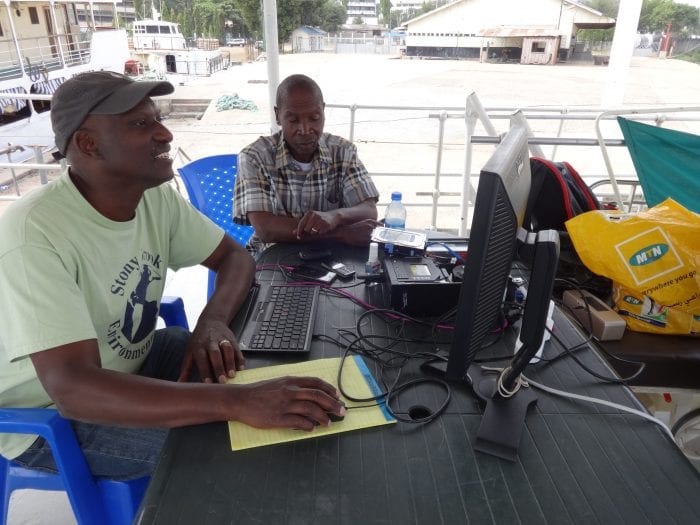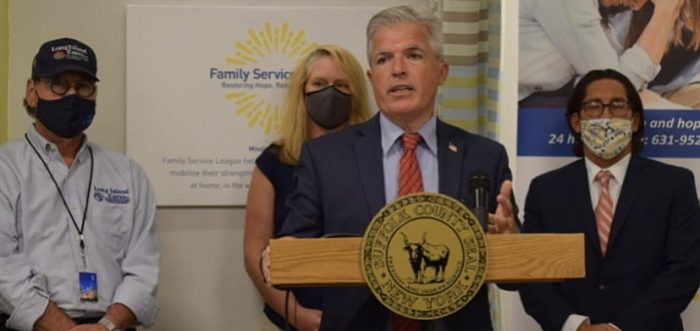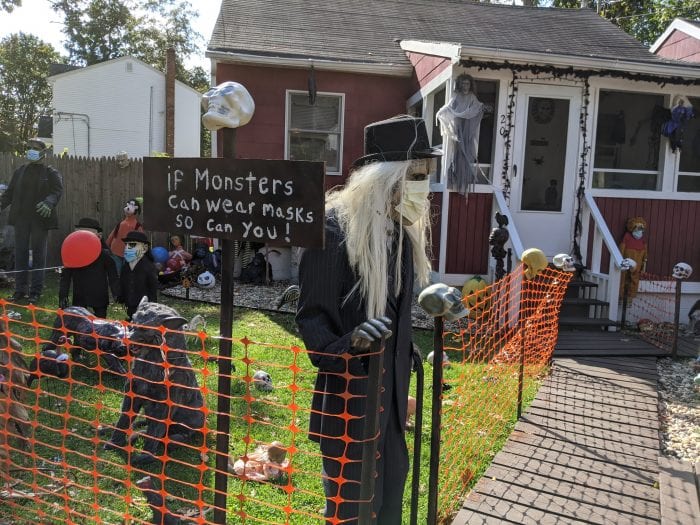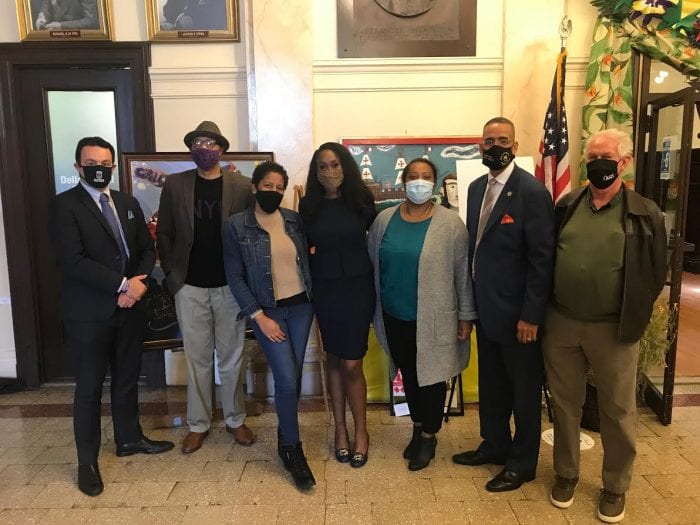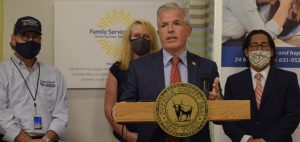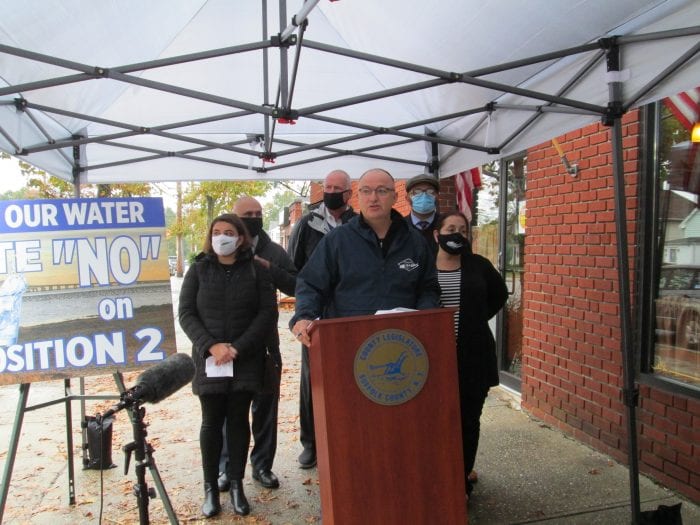By Daniel Dunaief
In tropical and subtropical countries, including Brazil and the Ivory Coast, a parasite moves from snails to humans, causing 220 million illnesses a year and as many as 200,000 annual deaths.
People contract the parasite when they enter shallow, warm waters, where the schistosomiasis larvae known as cercariae enters through the skin, moves through the blood stream and settles near the stomach or bladder.
Once it’s near the bladder, the parasite reproduces, sending its eggs out through urine or feces, which, if directed towards warm, shallow water bodies, can enter the snail and begin the process again.
Schistosomiasis causes anemia, malnutrition and learning difficulties, according to the Centers for Disease Control and Prevention, as the parasite robs humans of zinc and vitamins A and D. Prolonged infection can also cause bladder cancer.
Kamazima Lwiza, Associate Professor at the School of Marine and Atmospheric Sciences at Stony Brook University, is part of a new, five-year study on the effects of climate change on schistosomiasis.
Lwiza’s part of the research, which is lead by Stanford University and involves several institutions, is analyzing the latest Global Climate Models known as Coupled Model Intercomparison Project phase 6 results. Lwiza studies the models under four-kilometer resolution to look for patterns and trends.
By creating a model that predicts temperature changes, Lwiza’s part of the efforts hope to help other collaborators apply those temperature expectations to epidemiological models. The ability of the parasite to survive, reproduce and infect humans depends on the viability of the snails, which are temperature sensitive. The temperature range is between 14 and 35 degrees Celsius, with an optimal temperature of between 30 and 32 degrees Celsius.
A warmer climate would likely increase the prevalence of schistosomiasis in the regions of Brazil and the Ivory Coast that this study is exploring, as well as in newer areas.
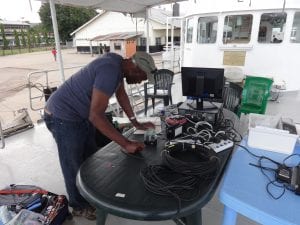
Depending on the regional topography, human population and amount of rainfall, the area that is conducive to Schistosomiasis could expand. An area that is relatively flat and where rainfall increases and human population is low but increasing could cause the infection rate to climb.
As waterways that were too cold either reach the minimum temperature threshold for snails, or increase the temperature into the optimal range, snail populations are likely to flourish.
Part of the funding for the SoMAS portion of the study is coming from the National Science Foundation and the National Oceanic and Atmospheric Administration. These national funding agencies recognize that increasing temperature and land use has created an environment that fosters the expansion of snails and increased prevalence of parasites into areas in the southern United States.
“Given the climate change,[some parts of Florida and Georgia] will be falling within that temperature range,” Lwiza said. “The worry is that, if this disease is going to spread, how are we going to be prepared to keep it off.”
Lwiza had originally planned to travel to Brazil this past summer to collect baseline data on water temperatures. The pandemic caused him to cancel his travel. Next year, he hopes to build on data around significant water bodies where the disease is prevalent.
While the portion of the study that includes Lwiza focuses on temperature, the Stony Brook scientist is working with other researchers who are exploring a range of other analytical and mitigation measures.
For starters, in some countries that have battled against this parasite, the use of dams has exacerbated the problem. Dams have kept out prawns, who are natural predators for snails.
Scientists are considering reintroducing prawns. These shellfish, which look somewhat like shrimp, could not only reduce the population of snails and the parasites they carry, but could also become an economic boon, as a part of an aquaculture project.
The goal of that part of the study is to “see if [prawns] can be used as biological control agents,” Lwiza said. “If we can find a way of introducing these back to where they used to be, we can cut down the snail population.”
The third aspect of the study involves the use of artificial intelligence. Researchers are putting together a program that will allow people to take pictures of the parasites they find and upload them to a web site to identify them.
“That way, we are doing crowd sourcing” which will allow “people to contribute to our investigation,” Lwiza said. Researchers will be able to map the location of the parasites.
Lwiza said Schistosomiasis can affect anyone who goes in the water. The illness doesn’t get as much attention as malaria. When people go to a rural clinic, if they have malaria, they can get medicines from 20 vendors. A person with Schistosomiasis, however, may need to go to a district or regional hospital for medication.
Originally from Tanzania, Lwiza grew up on the western shores of Lake Victoria, where strong waves don’t favor the development of snails. He currently lives in East Northport with his wife Catherine Kentuha, who works in the United Nations Development Program. The couple has three children — Philip, Johnathan and Mulokozi.
Lwiza has worked at Stony Brook University for 29 years and has lived in Port Jefferson Village and East Setauket.
When he lived in Port Jefferson Village, he was pleased and surprised by how his neighbors brought him candles during a brown out and made sure he and his family were okay.
“It was like, ‘Wow, this is really great. This is like Africa,’” he recalls thinking.
When he’s not working, Lwiza enjoys riding a bike and listening to Indian, Arab, African and Latin music. He is also interested in computer programming.
As this study of Schistosomiasis progresses, Lwiza hopes the incidence of disease decreases and that the science helps protect the population against a widespread illness.

